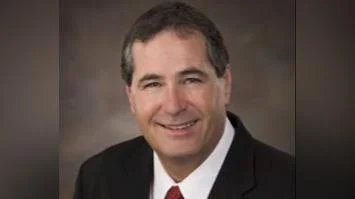Christine Kujawa Library Director | City of Bismarck
Christine Kujawa Library Director | City of Bismarck
The City of Bismarck is implementing advanced traffic systems to improve city commutes. Recent projects have introduced fiber optic cables into the City/County Building, enhancing traffic control capabilities. Bismarck Traffic Engineer Christopher Holzer manages data from over 55 intersections connected to Centracs, a cloud-based software that integrates with traffic signals, controllers, and cameras.
"Traffic control is a whole package and Centracs is part of the package," said Holzer. The system allows for remote communication with traffic signals and live video streaming from detection cameras. "You can take detection information and create graphs and charts... but you need that remote connectivity to make it all work."
Holzer explained the complexity of managing traffic control in response to events like crashes or road construction. "The best traffic control is something that is easily understood by the public," he noted.
Holzer described how factors such as uneven traffic distribution or distracted driving can disrupt flow. Emergency responses also affect synchronization, as first responders preempt signals during emergencies.
Centracs offers AI solutions for managing these challenges, though human oversight remains essential. "Some of the quirks are still being worked out," said Holzer about AI integration.
Traffic Maintenance Superintendent Paul Lies highlighted technological advancements since his early career days when timing mechanisms were mechanical. Today’s systems require regular updates due to aging equipment. “Today they are basically computers,” said Lies.
Bismarck IT/GIS Manager Tandra Kraft discussed transitioning infrastructure from copper connections to fiber optics for improved compatibility and performance. This transition aims at standardizing equipment across the city.
Fire Chief Joel Boespflug emphasized emergency vehicle preemption devices' importance in facilitating safe responses without disrupting public safety significantly: “It is a very valuable tool for us.”
Bismarck Police Department's Traffic Division works closely with Engineering to address high-collision areas using collision reports as tools for improvement strategies.
Lt. Jeff Solemsaas mentioned recent efforts resulting in reduced incidents at previously problematic intersections through adjustments like signal timing changes on State Street south of 43rd Avenue: "When we made a change...the crashes fell off."
Solemsaas noted ongoing collaboration between departments aiming toward reducing rear-end collisions—currently comprising 25% of local accidents—through effective use of updated technologies integrated within Bismarck's evolving roadway network infrastructure strategy aimed at enhancing commuter experiences while maintaining overall safety standards throughout its jurisdictional boundaries.






 Alerts Sign-up
Alerts Sign-up